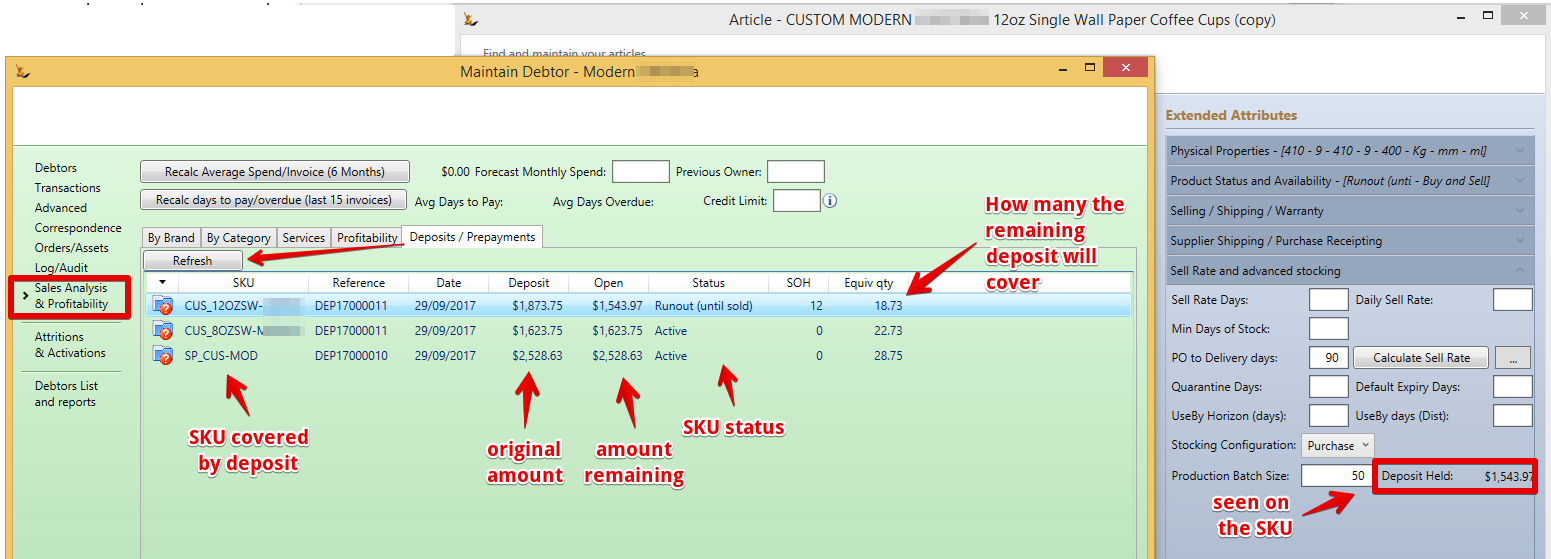...
- A customer wants some specific printed packaging - they want 400 a week and will order each week
- The supplier minimum order for printing is 5,000 units (3 months supply for that customer)
- The product is a Pack of 1,000 (A pack is 10 Inners of 100 each) so an order of 400 breaks a pack into components (4 Inners of 100 units).
- The customer wants to keep being able to order them - until giving 3 months notice of stopping. So it is to be a normally stocked item.
- The business decides that the deposit to be held will be 1.5 months stock (half of the purchase order requirement) - as this product cannot be sold to anyone else
- The deposit is created and linked to the packaging item
- Purchase orders are recommended based on sell rate like any other product (see Product Forecasting - Based on Sales History)
- The customer calls and gives 3 months notice
- The Item status is changed to "Run Out" so it is no longer recommended for purchase by sales forecasting
- The deposit is now allocated to any invoices created by the system (the amount of the deposit allocated is calculated and based only on this product)
- Note that if the Item is a Pack or a member of a Pack - then the deposit will be used when either the pack or it's component are sold
- If the deposit requirement changes then some or all of the deposit can be converted to funds on the customer account at any time
...
Remaining Deposit is visible on the customer
| Note |
|---|
The equivalent qty of the deposit remaining is expressed in the units that the deposit is linked to - ie If it is linked to a pack = then the equivalent qty will use the average cost of the pack. The Remaining Qty is for the SKU the deposit is linked to. If the deposit is linked to a "Pack" then the remaining qty includes the pack and the component quantity as a total qty. |
Deposit applied to invoice (when being used up)
...
